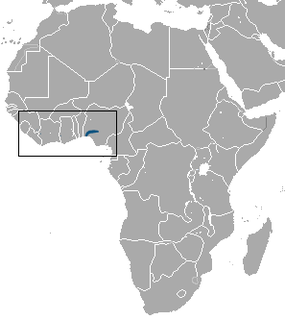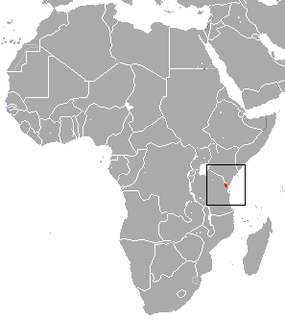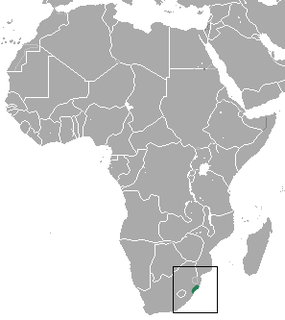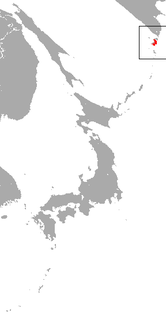This page is based on this
Wikipedia article Text is available under the
CC BY-SA 4.0 license; additional terms may apply.
Images, videos and audio are available under their respective licenses.

The Endangered Species Act of 1973 is one of the few dozens of US environmental laws passed in the 1970s, and serves as the enacting legislation to carry out the provisions outlined in The Convention on International Trade in Endangered Species of Wild Fauna and Flora (CITES). Designed to protect critically imperiled species from extinction as a "consequence of economic growth and development untempered by adequate concern and conservation", the ESA was signed into law by President Richard Nixon on December 28, 1973. The U.S. Supreme Court found that "the plain intent of Congress in enacting" the ESA "was to halt and reverse the trend toward species extinction, whatever the cost." The Act is administered by two federal agencies, the United States Fish and Wildlife Service (FWS) and the National Marine Fisheries Service (NMFS).

The conservation status of a group of organisms indicates whether the group still exists and how likely the group is to become extinct in the near future. Many factors are taken into account when assessing conservation status: not simply the number of individuals remaining, but the overall increase or decrease in the population over time, breeding success rates, and known threats. Various systems of conservation status exist and are in use at international, multi-country, national and local levels as well as for consumer use.

A near-threatened species is a species which has been categorized as "Near Threatened" (NT) by the International Union for Conservation of Nature as that may be considered threatened with extinction in the near future, although it does not currently qualify for the threatened status. The IUCN notes the importance of re-evaluating near-threatened taxon at appropriate intervals.

The Buettikofer's shrew is a species of mammal in the family Soricidae. It is found in Ivory Coast, Ghana, Guinea, Liberia, Nigeria, and Sierra Leone. Its natural habitat is subtropical or tropical moist lowland forests. It is threatened by habitat loss.

Crocidura grandiceps is a species of mammal in the family Soricidae. It is found in Benin, Ivory Coast, Ghana, Guinea, Liberia, Nigeria, and Togo. Its natural habitat is subtropical or tropical moist lowland forests. It is threatened by habitat loss. The vernacular name large-headed shrew is sometimes applied to C. grandiceps but has also been used for the entire related genus Paracrocidura.

The Ugandan lowland shrew is a species of mammal in the family Soricidae. It is found in Kenya and Uganda. Its natural habitats are subtropical or tropical swamps and subtropical or tropical moist montane forest. It is threatened by habitat loss.

The Tanzanian shrew is a species of mammal in the family Soricidae. It is endemic to Tanzania. Its natural habitat is subtropical or tropical moist montane forests. It is threatened by habitat loss.

Babault's mouse shrew is a species of mammal in the family Soricidae found in Burundi, the Democratic Republic of the Congo, and Uganda. Its natural habitat is subtropical or tropical moist montane forests. It is threatened by habitat loss.

The Oku mouse shrew is a species of mammal in the family Soricidae endemic to Cameroon. Its natural habitat is subtropical or tropical moist montane forests. It is threatened by habitat loss.

Sclater's mouse shrew is a species of mammal in the family Soricidae endemic to South Africa. Its natural habitats are subtropical or tropical moist lowland forests and swamps. It is threatened by habitat loss.

The Paramushir shrew is a species of mammal in the family Soricidae. It is endemic to Russia. Its natural habitat is temperate forests. It is threatened by habitat loss.

The Day's shrew is a species of mammal in the family Soricidae. It is endemic to India. Its natural habitat is subtropical or tropical dry forests. It is threatened by habitat loss.
Stenospermation arborescens is a species of plant in the family Araceae. It is endemic to Ecuador. Its natural habitat is subtropical or tropical moist montane forests. It is threatened by habitat loss.

Stenospermation is a genus of plant in family Araceae native to South America and Central America.
Stenospermation gracile is a species of plant in the family Araceae. It is endemic to Ecuador. Its natural habitats are subtropical or tropical moist lowland forests and subtropical or tropical moist montane forests. It is threatened by habitat loss.
Stenospermation hilligii is a species of plant in the family Araceae. It is endemic to Ecuador. Its natural habitat is subtropical or tropical moist lowland forests. It is threatened by habitat loss.
Stenospermation interruptum is a species of plant in the family Araceae. It is endemic to Ecuador. Its natural habitat is subtropical or tropical moist lowland forests. It is threatened by habitat loss.
Stenospermation peripense is a species of plant in the family Araceae. It is endemic to Ecuador. Its natural habitat is subtropical or tropical moist lowland forests. It is threatened by habitat loss.
Stenospermation subellipticum is a species of plant in the family Araceae. It is endemic to Ecuador. Its natural habitat is subtropical or tropical moist lowland forests. It is threatened by habitat loss.

A vulnerable species is one which has been categorized by the International Union for Conservation of Nature as likely to become endangered unless the circumstances that are threatening its survival and reproduction improve.















